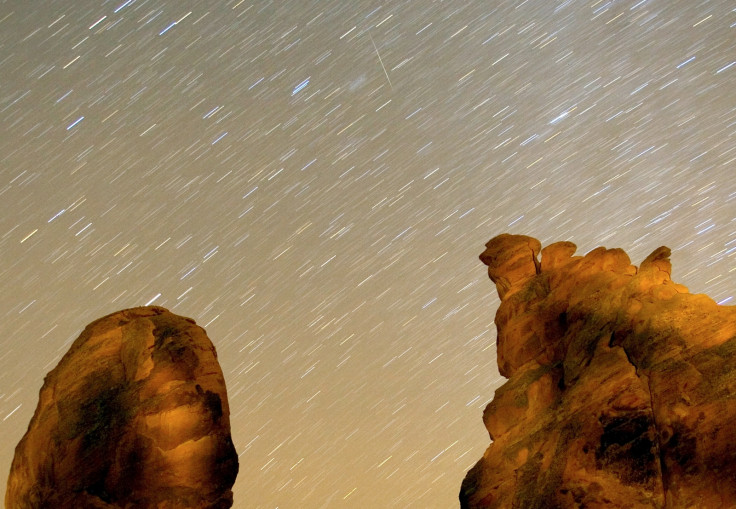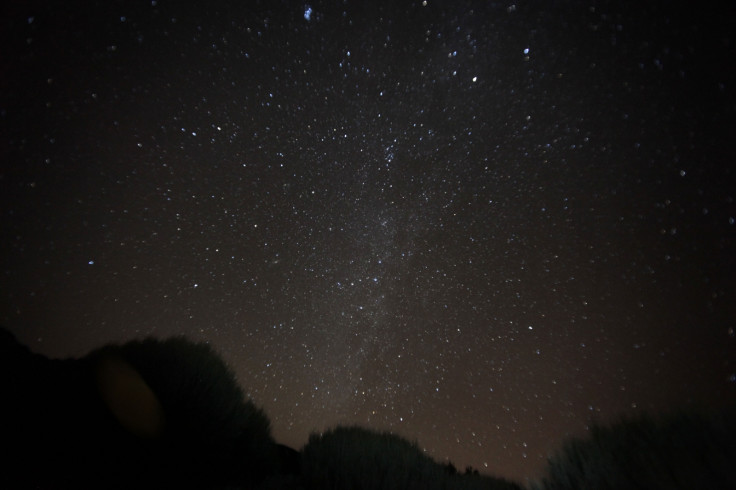Geminid meteor shower 2014: Where to watch 100 shooting stars an hour in the UK

The night sky will be lit up for the next 10 days by the annual Geminid meteor shower, one of the most spectacular displays of the year.
Starting on Sunday 7 December, the shower will peak on the 13 and 14 December. Skywatchers can expect to see up to 100 shooting stars an hour, depending on the weather conditions.
"The Geminids are typically one of the best and most reliable of the annual meteor showers," Nasa's Jet Propulsion Laboratory said in a statement, adding that the meteors will be travelling at a rate of 22 miles per second.
This means this month's shower should be more impressive than November's Leonids, in which only 15 meteors could be seen per hour in peak conditions.
What are the Geminids?
The meteor shower is caused by the object 3200 Phaethon, which is believed to be a Palladian asteroid with a "rock comet" orbit. The Palladian family of asteroids are B-type asteroids with extremely high inclinations in the intermediate asteroid belt.
Therefore, the Geminids – along with the Quadrantids – are the only meteor showers which do not originate from a comet. Usually Geminids meteors are slow-moving, but the shower is thought to be intensifying each year.
The Geminid meteor shower is named after the constellation Gemini, where the meteors appear to originate from. The shower takes place every December, when the Earth passes through a debris trail left by 3200 Phaethon.
When the fast-moving debris comes into contact with the planet's upper atmosphere, it burns up, creating the shooting stars.
Compared to the Perseids, which were first observed in 36 AD, and the Leonids, in 902 AD, the Geminids were first seen much later in 1862.

Will we be able to see the shooting stars?
A spokesperson for the Met Office said that the shooting stars should be visible, as they are normally bright with long, persisting trains.
"The Geminids are different to other meteor showers as Geminid meteors originate from an asteroid, as opposed to a comet, meaning they are very rocky and gritty, making them slightly easier to see than other showers," they said.
However, weather forecasters have warned that cloud, rain and possibly snow may obscure the view of the spectacular shower at the weekend. Better weather will increase visibility of the shower next week.
Astronomers recommend finding a dark and quiet spot to catch sight of the meteors. Observers in the northern hemisphere will see more of the Geminids, as the radiant is higher in the sky. It will still be visible in the southern hemisphere, but less clearly.
For those unable to see the Geminids, the Slooh Community Observatory will host a live online streaming of the event at the peak time, which can be seen here.
Where can you watch the shower in Britain?
Viewers hoping to catch a glimpse of the meteor shower should head away from city lights and into an area free of light pollution. The shower can be seen with the naked eye and it is best to dress for the cold and lie flat on your back, to get a panoramic view of the night sky.
London: The WaterWorks Nature Reserve in north-east London, near Leyton Midland Road station.
Manchester: Heaton Park, the largest in Greater Manchester.
Birmingham: Warley Woods is west from the city centre, off the A456 Hagley Road.
Newcastle: Northumberland National Park contains the largest area of protected night sky in Europe as an internationally designated Dark Sky Park.
Cardiff: Brecon Beacons, an hour's drive from Cardiff, was granted special protection as an international dark sky reserve in 2013, according to the BBC.
Edinburgh: The Royal Observatory Edinburgh in the Hermitage of Braid.
Glasgow: The Mugdock Country Park is located partly in East Dunbartonshire.
Belfast: Oxford Island National Nature Reserve hosted the Northern Ireland showcase event for the BBC Stargazing Live in 2012 and 2013.
© Copyright IBTimes 2025. All rights reserved.






















